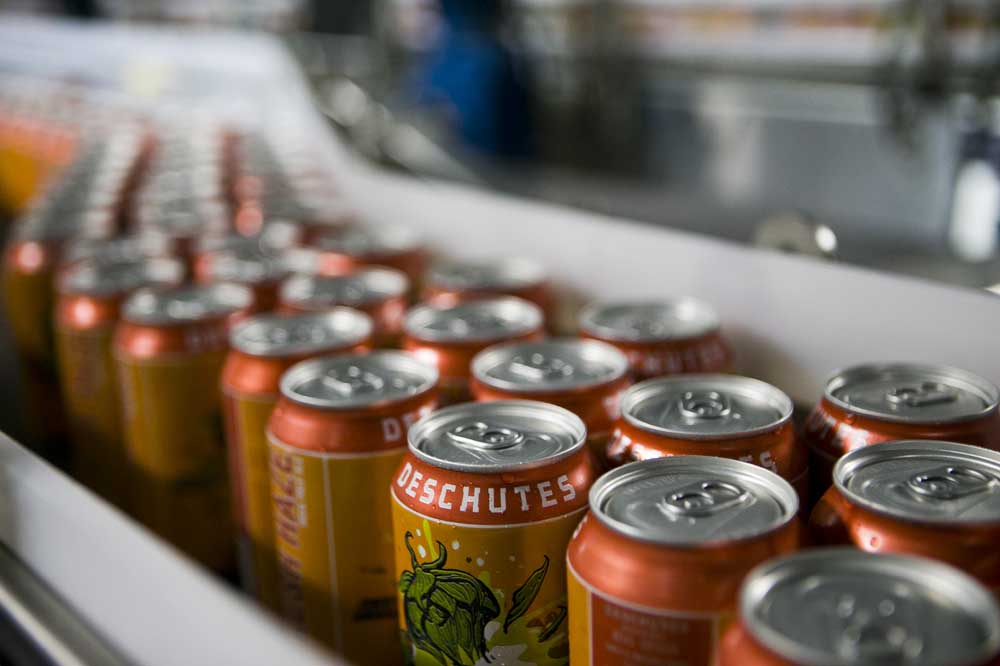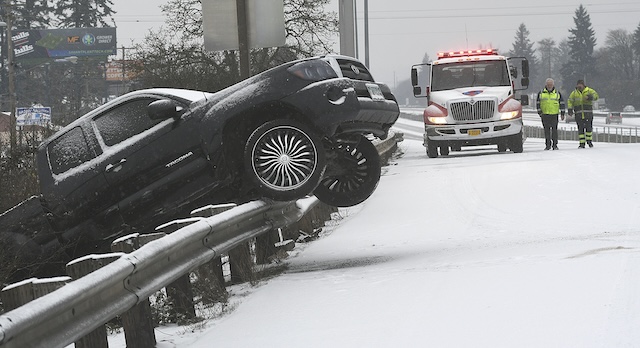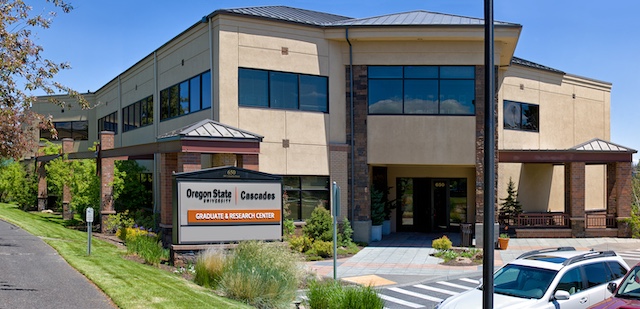Craft beer overflowing in Oregon
Published 12:00 am Saturday, June 15, 2019

- Cans of Deschutes' Fresh Haze travel along the canning line at Deschutes Brewery in Bend in January 2019.
They’re the brands this beer town was built on: Portland Brewing, BridgePort, Widmer Brothers.
For decades, they ruled craft beer not only in Portland but in Oregon and beyond, with wide distribution and venerable names like MacTarnahan’s, BridgePort IPA and Hefe. Craft beer drinkers had their favorite and supported their brewery.
Then something changed. The number of breweries across the nation took a massive leap, going from 1,500 a decade ago to about 7,500 now. With more options, habits shifted, and a fickle, younger generation of craft enthusiasts grew up with little brand loyalty. Instead of grabbing the same old favorites, the craft consumer now is likely to cruise the beer aisle looking for a new release or belly up to the nearby taproom for something fresh they’ve never tried — then take a crowler to go.
Add in external factors analysts say could be cutting into beer consumption — like legal marijuana and reports of millennials and Gen Z drinking less and preferring wine and liquor to beer — and the craft-beer industry has a problem, observers say.
The increased competition is roiling a once-steady landscape and claiming victims. In the past year, Portland’s once-beloved BridgePort Brewing, gone. Portland Brewing’s and Widmer’s once-packed restaurants, closed. Alameda Brewhouse and Burnside Brewing, history.
The breweries most in jeopardy tend to be older, larger and with wide wholesale distribution. In contrast, the model for success — though in more modest terms — are smaller operations that self-distribute or have moderate distribution with multiple avenues to sell their beer.
“We live in an age of promiscuity,” says Sam Holloway, a brewery consultant and University of Portland entrepreneurship professor. “For consumers, there’s never been a better time to be a beer drinker. But for a brewer, the old model of best practices doesn’t apply anymore.
“You look at the top 50 (in the U.S.), they’re struggling. These are really good entrepreneurs, really smart people doing everything right, and the industry changed.”
‘It’s just game on’
U.S. beer sales overall were down 1% in 2018, according to statistics released by the national Brewers Association, which tracks the beer industry. But craft beer continued to grow, with barrel output up 4% from 2017. Add in the craft breweries bought by Anheuser-Busch In-Bev and other big beer corporations — a segment not counted statistically as “craft” anymore — and craft consumption is even higher, by 9 million barrels.
While that’s not craft’s heady double-digit growth of a few years ago, it still accounted for about a quarter of the $114 billion in U.S. beer market revenue last year.
Much of that growth can be tied to this: Last year in the U.S., 1,049 breweries opened and 219 closed. In Oregon alone, nearly 300 breweries are now operating, with about 120 of them in the Portland area.
“There’s just too much beer out there,” says Jason Mcadam, the former owner of Burnside Brewing, which shut down in February. “Out-of-state breweries, small breweries, it’s just game on.”
Gary Fish, founder of Deschutes Brewery, said he has seen ups and downs in the market since the brewery, now Oregon’s largest, opened three decades ago in Bend. But this downturn feels different.
“With this many breweries, there’s not enough market, enough consumer purchase to sustain them all,” Fish said. “We’ve got 25 breweries in Bend. We used to kind of ‘own the market’ in Bend. That’s no longer true. We’re fighting alongside all these little, tiny breweries.”
‘Shiny new object’ over loyalty
Beyond the sheer number of breweries, another phenomenon is complicating the lives of brewers: fickle customers. They want what’s new and something they’ve never had before. They will stand in line for hours for a new release from a brewery that has all the buzz. And brand loyalty? Nope.
“The consumer is like, what’s new, what’s awesome? I’ve never heard of this beer, I gotta give it a try,” said Mcadam, who said increased competition was among the reasons Burnside closed. “There’s no allegiance to flagship beers or breweries anymore.
“Everything you put out has to be different. It’s flashy and glittery. People aren’t buying the same beer over and over like they used to.”
Matt Schumacher, who opened Northeast Portland’s Alameda Brewhouse in 1996 but closed it in November amid strangling competition and “circumstances” he declined to discuss, said what craft-beer consumers say and what they do are often two different things.
“10 Barrel is a perfect example,” he continued, referring to the Bend-based brewery. “Remember the frickin’ outrage people had in this town when (Anheuser-Busch InBev) bought them? Where’s everybody hanging out now? On their rooftop.”
Only so many taps and grocery shelves
For decades, the goal for many small breweries was distribution: Start selling in your backyard, capture distributors’ attention, get your beer onto store shelves in your region and maybe elsewhere, then reap the benefits. And if you did it well enough, you might even get the big payday: Selling your brewery to an AB InBev or MillerCoors, either whole or part.
But that seems to be a fading vision.
Holloway, the craft consultant, said the wholesale channel is a tough place to be right now.
“With AB InBev, Heineken, the grocery aisles are becoming increasingly competitive and harder to get your product into market. If you want to follow that model, you’re about 20 years too late.”
So if a brewery is built on big revenue from out-of-state sales, it could be overleveraged and in trouble. Some are looking toward alternatives to their traditional approaches. Widmer, for example, is beginning to brew hard spritzers. Ninkasi Brewing, the 35th largest craft brewer in the nation but who saw declines last year, has launched a seltzer line as well as created “cooperatives partnerships” with other breweries.
Deschutes, which distributes in about 30 states and Canada, in 2016 announced it would build a production brewery in Virginia to better serve the East Coast. But since then, the 10th biggest craft brewery in the nation has seen negative growth and, as a result, put the expansion plans on hold.
“At some point we have to behave like the company we are, not the company we want to be,” Fish said. “There are some tough decisions that go along with that. . We’re waiting for a little more clarity as to what happens, whether or not — or when — we build a brewery there. There’s too much uncertainty to justify that risk.”








